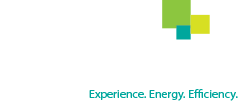High intensity LED lighting is helping to reduce the effects of dirt depreciation in manufacturing environments. These compact light sources have a much lower surface area than fluorescent high-bays, which is keeping them cleaner for longer.
Dirt depreciation is a common light loss factor that affects all lighting technologies. Manufacturing facilities typically have dirty environments, while in contrast, offices might have little dirt depreciation.
Six years ago, I walked through a metal fabrication facility that had recently implemented a lighting upgrade. A vendor replaced some 1000-watt metal halide fixtures with ten lamp T5 fluorescent high bays. The customer was very pleased with the installation, but because of budget constraints, they chose to forego a full upgrade and retained the older metal halide fixtures in one entire bay.
Two years ago, I returned to that same location for a sales call and walked through the facility to check on the performance of the earlier upgrade. I was surprised to find that those fluorescent high bays, which had once outshined the 1000-watt high bays, had now depreciated to the point that they were dimmer than the HIDs. This was a dramatic difference in light levels in just four short years, and one that was fairly obvious to the casual observer. After careful review of the project, I discovered the reason for the large drop in light levels: dirt depreciation.
I realized that the dirt depreciation was not an equal factor for both products even though they were in the same environment. I noticed that the surface area of a light source would multiply the effect of depreciation. If we could measure dirt depreciation scientifically, we would have to calculate how many particles accumulated on a specific square inch. If the accumulation rate is the same between two fixtures, then the surface area of the light source and reflector plays an important role. If a fluorescent luminaire with many long tubes and molded reflectors has a surface area that is three times that of a metal halide, we could assume that the dirt depreciation would be three times as fast.
The lesson here is that fluorescent technologies are not an optimal solution for a dirty environment unless the customer is willing to regularly clean the fixtures. Most customers neglect to clean the fixtures frequently because of the cost, so it’s usually safer to assume that very little cleaning will be done. Thanks to some types of higher intensity LEDs, lighting professionals can provide a design that will provide acceptable lighting levels for much longer periods of time. Just one more reason to consider LEDs on your next lighting project.


Leave A Comment